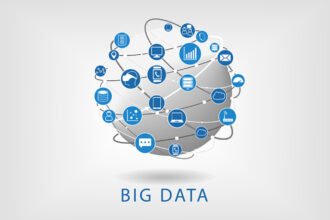Between coughing and sneezing, I did a quick google search on “flu home remedies” to see what kind of at-home concoction I could put together to help alleviate some of my symptoms. Little did I know that I was probably being indexed by Google for their “Google Flu Trends” tool, which according to their website “uses aggregated Google search data to estimate real-time flu activity.” I may have unwittingly helped Google predict the outbreak of the flu across the world.
Between coughing and sneezing, I did a quick google search on “flu home remedies” to see what kind of at-home concoction I could put together to help alleviate some of my symptoms. Little did I know that I was probably being indexed by Google for their “Google Flu Trends” tool, which according to their website “uses aggregated Google search data to estimate real-time flu activity.” I may have unwittingly helped Google predict the outbreak of the flu across the world.
The power of big data is reinforced even while sitting at home with the flu. While the healthcare industry in the U.S. still has several hurdles to overcome in terms of patient privacy, fragmented data sources and regulatory requirements, the idea that data collected via search queries can give me insight into where my flu might have originated from is deeply fascinating.
After looking at the Google Flu Trends tool, I can see that Texas is showing “moderate” flu activity, however several of the surrounding states are trending “high.” While this doesn’t hone in on what the exact source is for my current condition, I can see that the flu might potentially be heading Westward based on this information.
 (Estimates were made using a model that proved accurate when compared to historic official flu activity data. Data current through Feb. 24, 2015)
(Estimates were made using a model that proved accurate when compared to historic official flu activity data. Data current through Feb. 24, 2015)
But it doesn’t stop at tracking the flu outbreak across the country. Here are other ways in which data is empowering us to know more and do more:
Big Data Offers Insights That Would Otherwise Be Unknown
Whether you work in retail, healthcare, or entertainment, big data tools can help you gain deep insights into patterns that would otherwise be unknown. In this particular case, aggregate search queries offered me much more information than exchanging pleasantries with the local pharmacist or even seeing my doctor. I would have never known that the surrounding states of Louisiana and Oklahoma are frantically searching for flu remedies, symptoms, etc. in high volume. For brands and marketers, big data allows companies to have far more information about their customers across several touchpoints than what they would be able to do on their own.
Big Data Helps You Make Smarter Decisions
With the aggregation of so much information, and by using tools like customer data platforms, companies are better positioned to make smarter decisions, even in real-time. Do I need to see a doctor? Probably not, knowing that the flu seems to be going around right now. The same goes for companies. They can now unify and visualize their big data to make smarter decisions on what they should do next based on the actionable insights available to them.
Big Data Visualizations Make Information Easier to Understand
The Google Flu Trends map is an easy-to-understand, visual representation of massive amounts of information on the spread of the flu virus across the country. And beautiful tools like this made data more understandable and accessible to people across organizations helping companies democratize their data. One of Umbel’s main goals is to provide the same type of visual clarity and insights for our clients — a simple, easy-to-follow visual than evokes some sort of Eureka moment.
Knowledge is power. And while the Google Flu Trends map was really intended to help alert health professionals to outbreaks early, and in areas without traditional monitoring, the power of this data in the hands of these organizations is that it gives all of us better odds. Knowing more enables us to take better care of our health, of our companies, and of our customers.
So knowing what I know now, will this make me feel better? Actually, yes.






